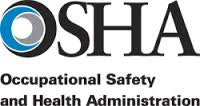Update to OSHA's PSM Regulation. Part 1: Background
The United States Occupational Safety and Health Administration (OSHA) issued a notice (August 30, 2022) that they intend to update the Process Safety Management (PSM) standard for the first time in three decades. This post is the first in a series in which we review the proposed changes.
Details to do with the proposed update are available here. OSHA has organized its proposed updates into the following three sections:
I. Background.
II. Stakeholder Meeting.
III. Submitting and Accessing Comments.
In this post we review some of the requirements described in the first paragraph: ‘Background’.
The notice starts with the following statement.
OSHA published the PSM standard, 29 CFR 1910.119, in 1992 in response to several catastrophic chemical-release incidents that occurred worldwide. The PSM standard requires employers to implement safety programs that identify, evaluate, and control highly hazardous chemicals. Unlike some of OSHA’s standards, which prescribe precisely what employers must do to comply, the PSM standard is ‘‘performance-based,’’ and outlines 14 management system elements for controlling highly hazardous chemicals. Under the standard, employers have the flexibility to tailor their PSM programs to the unique conditions at their facilities.
Bhopal and Piper Alpha
The most important of the incidents that “occurred worldwide” was the release of methyl isocyanate at the chemical facility in Bhopal, India in the year 1984. The incident led to the death of thousands of people in the local community.
The Piper Alpha disaster that occurred in the North Sea in the year 1988 was not a “chemical-release” incident, but it contributed toward the overall feeling that the energy and chemical industries needed to improve their process safety performance.
It was this need for improvement that provided the justification not only for the PSM rules from OSHA and the EPA (Environmental Protection Agency) but also the upgraded Safety Case regimes as called for in the Cullen Report to do with Piper Alpha.
Performance-Based
The notice points out that the process safety standard differs from most other OSHA standards. It is “performance-based”, not “prescriptive”. It does not provide detailed pass/fail thresholds; instead each company is responsible for coming up with a program that fits its own circumstances. One reason for this feature is that OSHA cannot write detailed rules for the wide range of highly specialized chemical processes that the rule covers. Instead, OSHA has to rely on companies to develop specific standards that are appropriate for their processes and the chemicals that they handle.
The following quotation, which is taken from the Executive Order that triggered the need for this update, highlights the extent and complexity of the chemical process industries in the United States.
Several hundred thousand facilities in the United States use, manufacture, and store chemicals, encompassing everything from petroleum refineries to pharmaceutical manufacturers to hardware stores. The U.S. chemical industry manufactures over 70,000 unique products, many of which are critical to the health, security, and economy of the Nation.
14 System Elements
In 1992 OSHA chose to organize its standard into the following fourteen elements.
Employee Participation
Process Safety Information
Process Hazards Analysis
Operating Procedures
Training
Contractors
Prestartup Safety Review
Mechanical Integrity
Hot Work
Management of Change
Incident Investigation
Emergency Planning and Response
Compliance Audits
Trade Secrets
Other organizations and companies have since developed improved lists. For example, the Trade Secrets element is not really to do with the management of chemical processes so it is generally ignored by these other organizations. Nevertheless, OSHA has chosen not to change the selected management elements. However, the phrase “employers have the flexibility to tailor their PSM programs” shows that OSHA recognizes that the original list needs to be modified in order to be relevant and useful.
Since its publication in 1992, the PSM standard has not been updated. The 2013 ammonium nitrate explosion at a fertilizer storage facility in West, Texas renewed interest in PSM. In response to this incident, on August 1, 2013, Executive Order (E.O.) 13650, Improving Chemical Facility Safety and Security, was signed. The E.O. directed OSHA and several other federal agencies to, among other things, modernize policies, regulations, and standards to enhance safety and security in chemical facilities by completing certain tasks, including: coordinating with stakeholders to develop a plan for implementing improvements to chemical risk
managements practices, developing proposals to improve the safe and secure storage handling and sale of ammonium nitrate, and reviewing the PSM and Risk Management Plan (RMP) rules . . .
30 Years Without Much Change
In the 30 years since it became effective there have been just a few minor revisions to the PSM standard. For example, flammable liquids are now more specifically flammable liquids with a flash point less than 100 F, and material safety data sheets are now called safety data sheets.
However, 30 years is a long time in the rapidly-changing world of process safety, so OSHA accepts that they cannot progress with just minor revisions.
Risk Management Plan
The Environmental Protection Agency has its own process safety program that is similar, but not identical to, the OSHA rule. The EPA is updating the requirements of its rule in parallel with OSHA’s work.
The Environmental Protection Agency (EPA) has a separate, pending proposal addressing RMP requirements. In the Clean Air Act Amendments of 1990, Congress required OSHA to adopt the PSM standard to protect workers and
required EPA to protect the community and environment by issuing the RMP
rule. The PSM and RMP rules were written to complement each other in accomplishing these Congressional goals.
Index of Posts
For a list of the posts that we have published to do with OSHA’s proposed updates, please visit Update to OSHA’s Process Safety Management Regulation: An Index.



